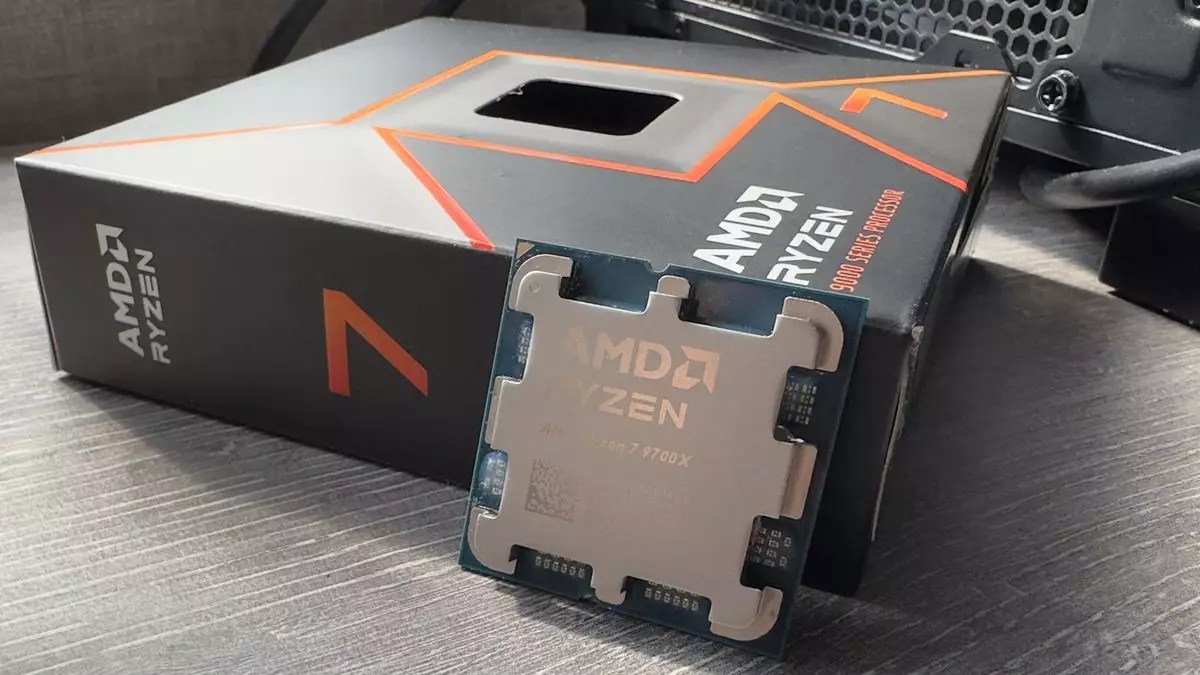The semiconductor landscape is constantly evolving, with companies like AMD (Advanced Micro Devices) at the forefront of this transformation. Recent reports indicate that AMD has begun leveraging TSMC’s new fabrication facilities in Arizona for the production of its Ryzen 9000-series desktop CPUs. This development signals not only a significant step for AMD but also represents a burgeoning trend in domestic semiconductor manufacturing within the United States. As the situation unfolds, the implications of this move merit close examination—not just for AMD but for the entire tech industry.
Taipei-based journalist Tim Cuplan’s assertion regarding AMD’s production of Ryzen 9000 CPUs in the U.S. highlights a key strategic shift for the company. Historically, AMD has relied on TSMC’s Taiwan facilities, particularly for high-performance products, utilizing the TSMC N4 node, which is a 4nm fabrication technology. With the Ryzen 9000 series, including models like the Ryzen 7 9700X, already rolling off the production line, this technology transfer to the Arizona fabs represents a vote of confidence in U.S. manufacturing capacity.
However, the broader implications of this transition are complex. TSMC has openly acknowledged that chip manufacturing costs are significantly higher in the United States compared to Taiwan. This reality raises essential questions about the sustainability of domestic semiconductor production, especially for a company like AMD that needs to balance cost efficiency with strategic investments in local capabilities. The decision to produce in Arizona could be seen as a long-term investment in resilience against geopolitical risks, particularly given the global supply chain disruptions recently experienced.
The Challenges of Chiplet Design
Part of what makes AMD’s Ryzen 9000 series noteworthy is its chiplet architecture, whereby multiple core chips are combined into a single package. This design offers considerable advantages, including improved yield rates and lower costs. However, while AMD appears to be transitioning some 8-core CPU dies to the U.S., the accompanying 6nm I/O die—the component responsible for essential functions such as memory control—is not yet being manufactured stateside, remaining in Taiwan.
Such a mixed production model complicates the narrative of American-made excellence. While the central CPU components may be sourced domestically, the overall product is still reliant on international supply chains, countering the notion of a fully U.S.-manufactured product. As the industry progresses, the need for a more integrated approach to domestic production becomes crucial.
TSMC is investing heavily in its new Arizona facilities, with three new fabs in various stages of development. Currently operational is FAB 21-1, which produces 4nm chips inclusive of AMD’s Ryzen series and Apple’s A16. Another facility, FAB 21-2, intends to elevate production capabilities further by enabling the fabrication of 3nm chips, while FAB 21-3 aims for a groundbreaking move into the 2nm space.
Despite these advancements, TSMC plans to initially prioritize its Taiwan facilities for the most advanced 2nm process technologies. This means that while AMD and similar companies benefit from U.S. production, they may not have access to the cutting-edge nodes as quickly as they do in Asia. Consequently, AMD’s shift may not translate directly into the most advanced products being fabricated in Arizona but might instead establish a crucial footing for future expansion.
Weighing the Benefits and Costs
AMD and similar companies face the ongoing challenge of weighing the benefits of local production against the higher costs associated with it. Factors such as avoidance of tariffs and reduced logistical hurdles must be quantified against the financial implications of sourcing from a region with inherently higher manufacturing costs. As U.S. labor and operational expenses continue to differ vastly from those in Asia, companies must find a balance to maintain competitiveness.
Moreover, industry giants such as Nvidia are representatives of this balance, recently updating their product lines—still reliant on TSMC’s N4 node while taking heed of rising production costs. Future competition will likely be dictated by how well these companies adapt to an evolving production landscape that increasingly emphasizes domestic capabilities.
As AMD embarks on this new phase of production with TSMC in Arizona, the broader semiconductor landscape stands poised for significant changes. The implications of domestic production extend beyond AMD and TSMC, affecting global supply chains, pricing strategies, and competitive dynamics. The tech industry must brace for an era where U.S. manufacturing capabilities grow, but still require strategic international cooperation. Looking ahead, the next five years will likely reveal which companies successfully navigate this multifaceted environment, and how the interplay of domestic and international manufacturing continues to shape the technological frontier.


Leave a Reply